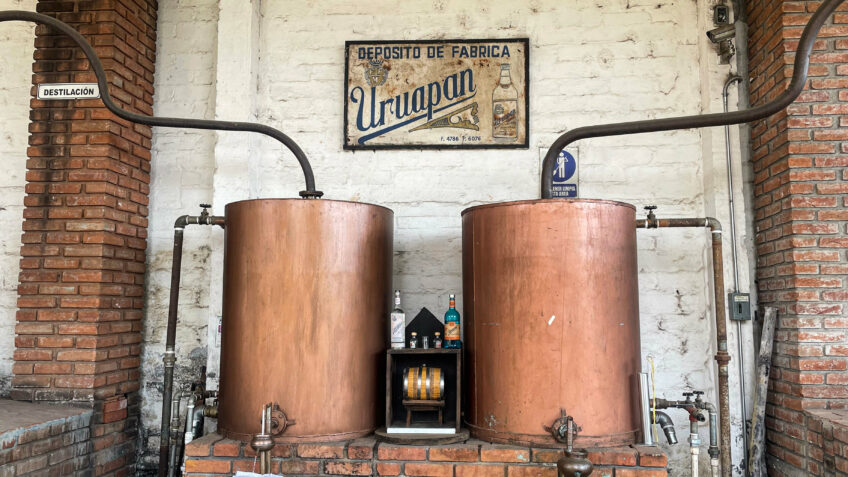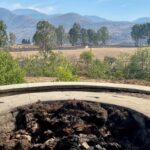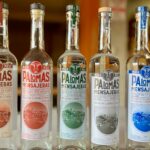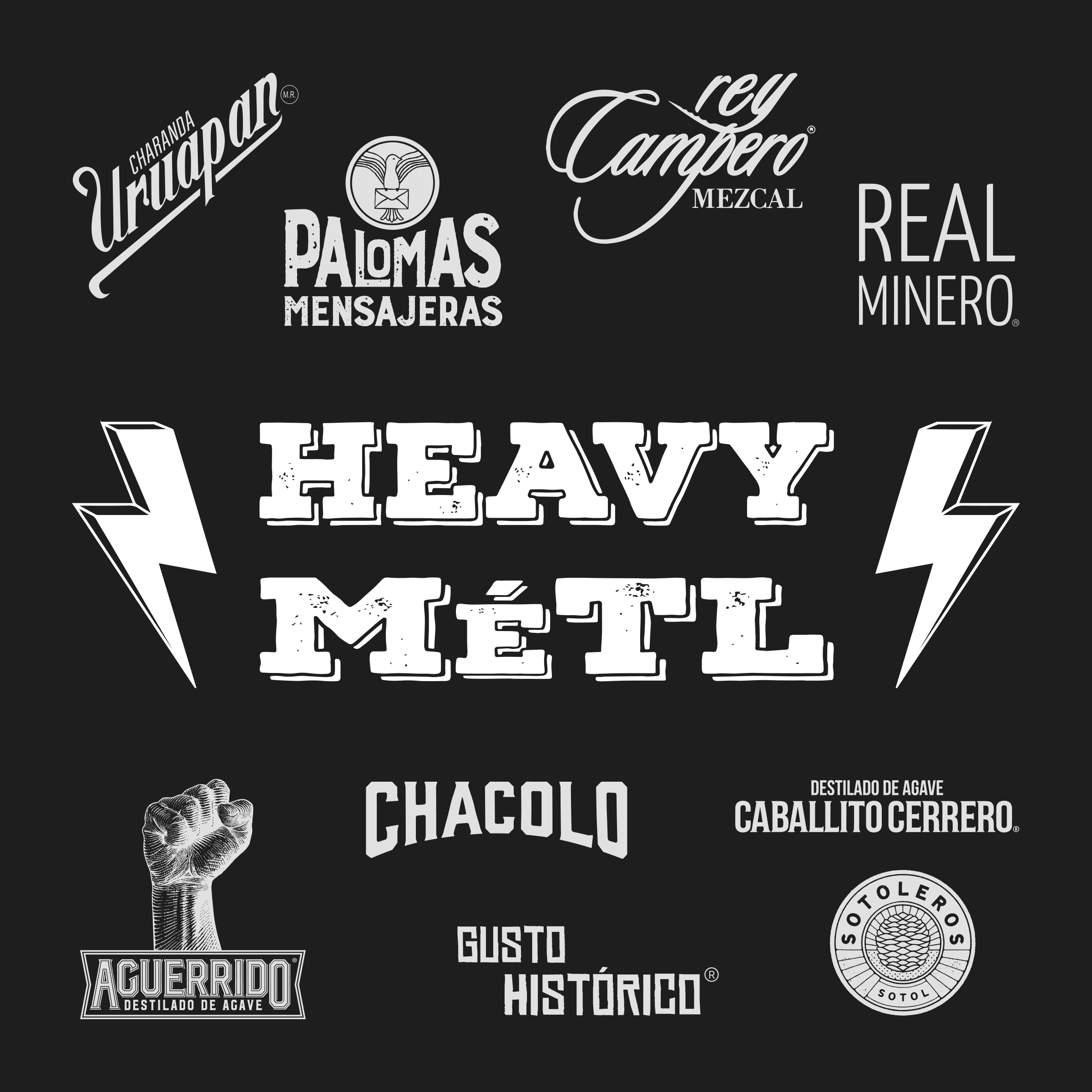While the sugar cane plant originated in southeast Asia, the people of Mexico have been using it for a variety of different purposes since the plant arrived via Spanish colonists in the 1500s. It was those same Spanish colonists who prohibited the production of “homemade spirits” through the late 18th century in order to protect sales of Spanish brandy. During this Spanish prohibition, rural producers all over the country continued to produce their sugarcane aguardiente or chinguirito as it was often called.
“It was more common for it to be made clandestinely by women in their kitchens with similar techniques to the Filipino style, where a few pots was enough. It was cheap due to the abundance of cane, and that is why it was said to be of low quality,” says Miriam Pacheco of Casa Tarasco Spirits (source).
Once prohibition was lifted in 1796, companies like Bacardi began setting up distilleries in Mexico, and the Mexican rum market was born.
The Pacheco Family and Charanda
The Pacheco family of Uruapan, Michoacán is a multi-generational powerhouse of incredibly smart, social, and welcoming people. Their history with distillation dates back to the 1800s, when older members of the family produced mezcal for the local community. In 1907, Don José Cleofas shifted the family’s focus from mezcal to rum (or Charanda, we’ll get to that…), founding the Uruapan brand that is available internationally today.
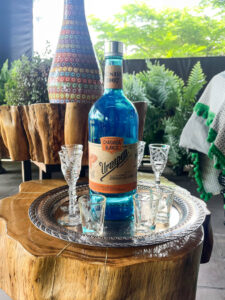
The Uruapan Charanda brand. This release of charanda is made with sugarcane and molasses.
The family produced their sugar cane spirits for five generations, and in 2003 the Charanda Denomination of Origin was established. This new Denomination of Origin was put in place to protect the unique nature of the sugar cane rums, or charandas, that are traditionally produced in a few select micro-regions of the state of Michoacán. Only sixteen of the one hundred thirteen municipalities of the state of Michoacán can call their sugar cane spirits charanda. That is an incredibly small and focused denomination of origin, and a testament to the unique qualities that these few micro-climates produce. The name charanda comes from the red volcanic soil in which the sugar cane grows in the micro-climates of these sixteen municipalities. The word Charanda translates to red land or red soil in the local Purépecha language. For the Pacheco family, the 2003 Denomination of Origen represented years of hard work from their family, local politicians, and other charanda producing families in the area.
In order for a rum to be considered a Charanda, it must meet several requirements in the denomination of origin:
- Raw Materials: Charanda can be made from sugarcane, sugarcane juice, piloncillo (solidified sugarcane juice), or molasses.
- Origin: Regardless of which raw material is used, it must come from the the sixteen municipalities that are recognized in the denomination of origin. It is important to note that sugarcane production in this region has decreased due to the high demand for avocados. Michoacán is the world’s leading avocado producer. Fortunately, the Pacheco family cultivates their own sugarcane to ensure its availability amongst other competitive crops.
- Alcohol Content: The volume of alcohol at the time of bottling must be between 35-55% ABV.
- Distillation Methods: Charanda can be distilled using column stills or copper or Filipino alembic stills, depending on the style of Charanda being produced.
- Aging: Charanda can be aged in barrels. There are some additional specifications regarding the size of the barrels used for aging.
The charanda denomination of origin is in place to protect the unique history, culture, and microclimate that creates these distinctive sugar cane spirits. The terrain and mineral content contribute greatly to the characteristics of the spirits. Water also plays a fundamental role as the region has an abundant water supply from local springs and rivers, and this unique water imparts distinct flavors and characteristics to charanda.
Visiting Casa Tarasco
We first learned about charanda through our friends at Heavy Metl Imports. They are the US importers of the Uruapan Charanda brand. While we’re in no way rum aficionados, we enjoy well made spirits and we quickly took a liking to drinking Uruapan daiquiris at Small Victory in Austin, TX. We found ourselves in Michoacán earlier this year, and jumped at the opportunity to learn more about charanda and Uruapan first hand.
We met up with Fernando Pacheco in the morning in Tocuaro, a small fishing town on Lake Pátzcuaro. Fernando is a brother in the group of siblings who now own and operate Casa Tarasco Spirits, which produces Uruapan Charanda. We didn’t fully know what to expect for the visit, but we were surprised to see agave growing everywhere when we arrived. Weren’t we supposed to be learning about charanda?
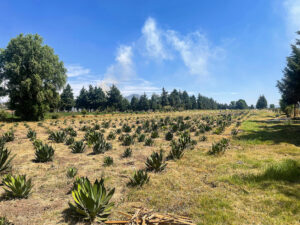
The Casa Tarasco Spirits agave fields in the town of Tocuaro, just a short walk from Lake Pátzcuaro.
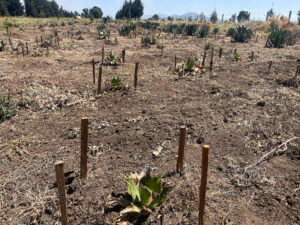
This area of Michoacán can get very cold in the winters. They will get overnight frosts this close to Lake Pátzcuaro and the team often needs to cover the agaves with cloth to keep them safe from cold temperatures.
Fernando was immediately welcoming and warm. He’s middle-aged and quite well-travelled. He spent a year of college in New Mexico and he has travelled extensively throughout the US, Europe, and Central/South America. He mentioned going to Cuba quite frequently and (as we’d find out later) he loves cigars… a great match for charanda!!
He explained to us that the family has three distilleries: one for distilling agave, one that is the “old” or rural charanda distillery, and one new bigger charanda distillery. The distillery where we first met him in Tocuaro was the agave distillery or vinata.
Tokua Mezcal
The vinata in Tocuaro was 3 years old when we visited, with most of that time being used for construction and planting agave. Distillation didn’t begin until November 2022, and there had only been four total batches made there when we visited in May 2023. They use this vinata for mezcal only, no charanda.
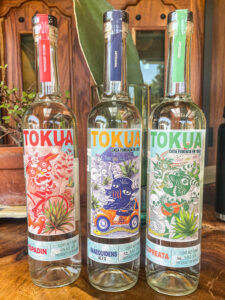
The Tokua Mezcal brand, named after the town where it is produced, Tocuaro, Michoacán.
Fernando explained that his family had a rich history in agave spirits production, before they began making charanda/rum in 1907. He’s one of five in his generation, the only son, with his sister Miriam Pacheco, who is widely known for her work educating and promoting charanda internationally. Fernando told us that for the family, the mezcal they were just beginning to produce at the vinata was an homage to their past and a new way forward as well. They named the new mezcal brand Tokua as that is the nickname for the town Tocuaro, where the vinata is located.
We ate a delicious breakfast of chilaquiles on the back patio of the house that is attached to the rural vinata. Fernando poured some Uruapan charanda into his coffee and encouraged us to do the same. After breakfast, we walked out into the agave fields behind the vinata.
The agave fields are surrounded on both sides by corn and alfalfa fields. They have about 4,000 agaves planted on the property, with most of them being in their infancy given that the vinata was only three years old. The agaves are mostly Cupreata and Alto, but they also have some Espadin that was grown from seeds that were collected in Oaxaca.
We returned back to vinata and Fernando introduced us to Francisco Vásquez, who is the maestro mezcalero for the Tokua brand. He was actively distilling and poured us some 75% ABV Cupreata to taste. Keep in mind, it was only 11:30am at this point. Who needs coffee?!
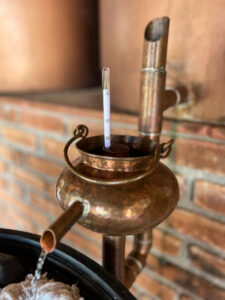
75% Tokua Mezcal straight from the still!!
They use a fairly large shredder to mill the cooked agave so that it’s mostly agave juice that is fermenting, instead of the big chunks of agave fibers that are commonly seen at other vinatas. Once the agaves are milled, they use wooden barrels for fermentation. Many of these wooden barrels were previously used to age charanda, and they give the mezcal a slight hint of charanda/rum flavor that is distinct and unmistakable. It also gets very cold in Tocua. Being so close to the lake, temperatures can get below freezing at night in the winter, so they add pulque to the fermentation to help kickstart the fermentation process.
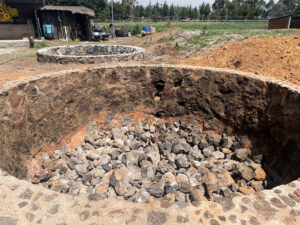
The Tokua Mezcal horno used to cook the agave.
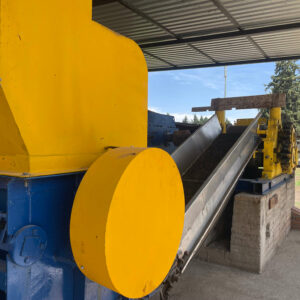
The Tokua Mezcal shredder used to mill the cooked agave.
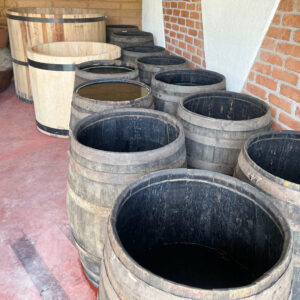
The Tokua Mezcal agave fermentation barrels. Some of these barrels were previously used to age charanda, giving the agave ferment a unique flavor.
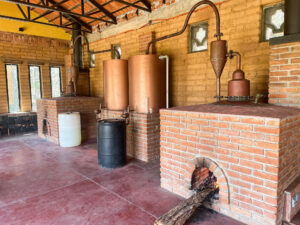
The Tokua Mezcal distillation area.
Lupita in Patuán
We left the vinata around noon and drove out to Patuán, Michoacán, down a twisting entrance way that was lined with tall sugar cane stalks and massive mango trees. There was nothing but sugar cane and wooded hills for as long as I could see. We arrived at a massive old water-powered stone Scottish mill that was built in 1921 and is still used today to press the fresh sugar cane to extract the juice. The mill was gigantic in comparison to the charanda distillation area that it supports.
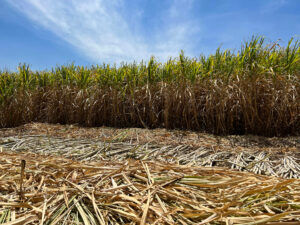
The harvesting of sugar cane at the small rural distillery.
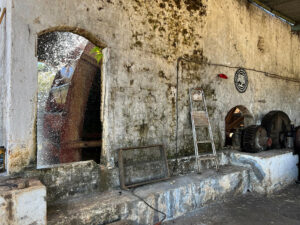
The Uruapan Scottish mill used at the rural distillery to extract the fresh cane juice from the harvested sugar cane. Notice that this is fully water-powered, using a stream of water higher on the hill to turn a massive turbine.
Lupita came to greet us shortly after our arrival, with her chihuahuas Penguino and Bambi following her wherever she went. She explained that she’d been living and distilling at this small, rural Uruapan charanda distillery for three years. Outside of the massive Scottish mill, the size and scope of the operation was miniscule, significantly smaller than I’d expected. She had a single small wooden fermentation tank, and two small Filipino stills. That’s it. The words handcrafted or handmade don’t do justice to how Lupita producers her charanda. Every aspect of the process is done by hand with only the most rudimentary tools similar to what you’d see in an ancestral mezcal (rustic distillation, open-air fermentation, etc…).
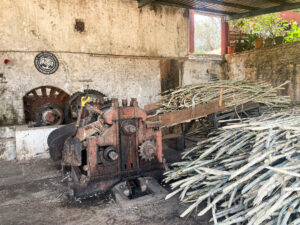
The Uruapan Scottish mill with freshly harvested sugar cane that is ready to be pressed for it’s juice.
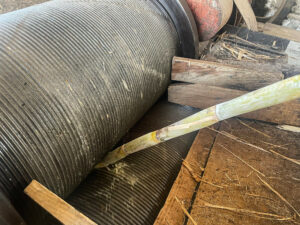
The Uruapan Scottish mill crushing sugar cane. Notice the sugar cane juice shooting from the cane as it is pressed.
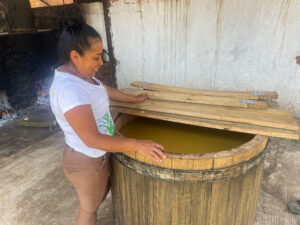
Maestra Lupita and her fermentation barrel. This is the only fermentation barrel at the rural distillery, which produces incredibly small-batch charanda.
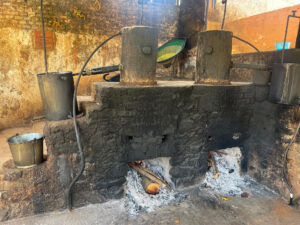
The Uruapan stills used by Lupita at the rural distillery. These still are made from hollowed tree trunks. The rustic nature of this type of production matches anything we’ve ever seen in mezcal.
She distills only with fresh cane juice, known as Guarapo. She explained that most other rum or charanda producers will use a blend of different sugar cane varietals together, essentially creating an ensamble of these different sugar cane varietals. She found that by distilling the different sugar cane varietals separately, she could create vastly different flavors and profiles of charanda. She took us over to a table, where we tasted these single varietal charandas side by side and the differences were shocking.
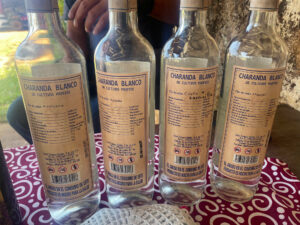
Tasting a line up of single varietal sugar cane charandas at the rural Uruapan distillery. Notice the Tipo de Caña on each label.
The small batch spirits that Lupita produces are the artesenal releases from the Uruapan brand. Many of her batches are only 30-35 liters, and are completely handmade in this rural distillery, surrounded by sugar cane fields. Her sprits are as beautiful and exquisite as the countryside that surrounds this rural distillery. I could have stayed there all day, but we had a lot more to see, so we jumped back into our cars and drove to the city of Uruapan.
Casa Tarasco Spirits
Uruapan is the second largest city in Michoacán. It has a population of about 350,000 people. The sudden hustle and honking of cars on busy highways was a quick change from the rural and rustic distillery where Lupita created her small batch charandas. The new large distillery is located in a quiet part of town however. We arrived and followed Fernando as he showed us the larger facility, where the family produces not only Uruapan charanda but about twenty total brands that fall under the Casa Tarasco Spirits umbrella.
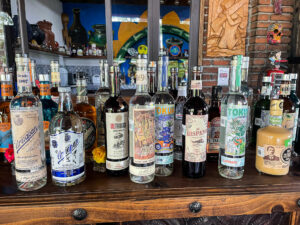
Many of the Casa Tarasco Spirits bottles. These are all different brands of charanda, agave, etc.. that the family produces.
This larger new distillery was built in the 1980s through the 1990s, and it replaced a different smaller distillery that they had on the other side of town, which is now a bar called La Charandaria and an art school. Those two new businesses are still owned and operated by the family. In the new distillery, there are two main distillation areas. One of them has very large French column stills, which are only used when they are producing charanda from molasses, not fresh cane juice like a Lupita’s. The other distillation area is significantly smaller with a few copper stills, including the El Prieto still, which is over 100 years old and was moved to this location from the old distillery. The smaller stills are in constant use, while the larger French column stills are there for larger batch productions only, which is much less frequent.
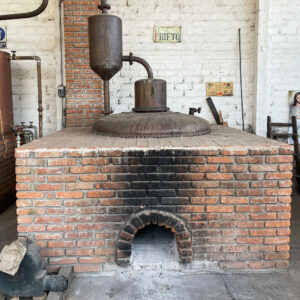
The 100+ year old El Prieto still that remains in use today for the production of Uruapan charanda.
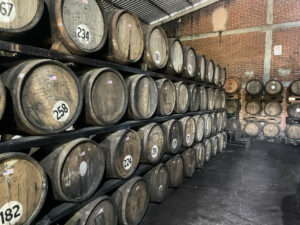
Uruapan charanda aging in wooden barrels. This was an impressive aging program with a wide variety of barrels from around the world in use.
After a brief tour of the distillery, Fernando took us over to another patio area where he gave us all Cuban cigars and pours of charanda that had aged 5+ years in Ukrainian wine barrels. We lit up the cigars and sipped the charanda, which was the most enjoyable sugar cane spirit I’d ever tasted. It was silky and elegant, paired perfectly with the cigar and a few snacks at the table. We asked Fernando about buying a bottle of this charanda. He laughed and told us that this batch was only for the family. We were sipping the true Uruapan private stock.
Order an Uruapan Daiquiri
We left the large distillery and stopped at La Charandaria to taste a few more spirits and meet more of the family. Everything we experienced that day had a single thread and connection to the Pacheco family. They’re a very tight knit family with an impressive history that carries a culture and a community along with it. The uniqueness of that region shows in the interactions they have with those around them, and it’s captured in the distinct characteristics of the charanda that they produce and promote to the international community. If you haven’t done so already, go out and order an Uruapan daiquiri at your favorite cocktail bar. You won’t be disappointed.


